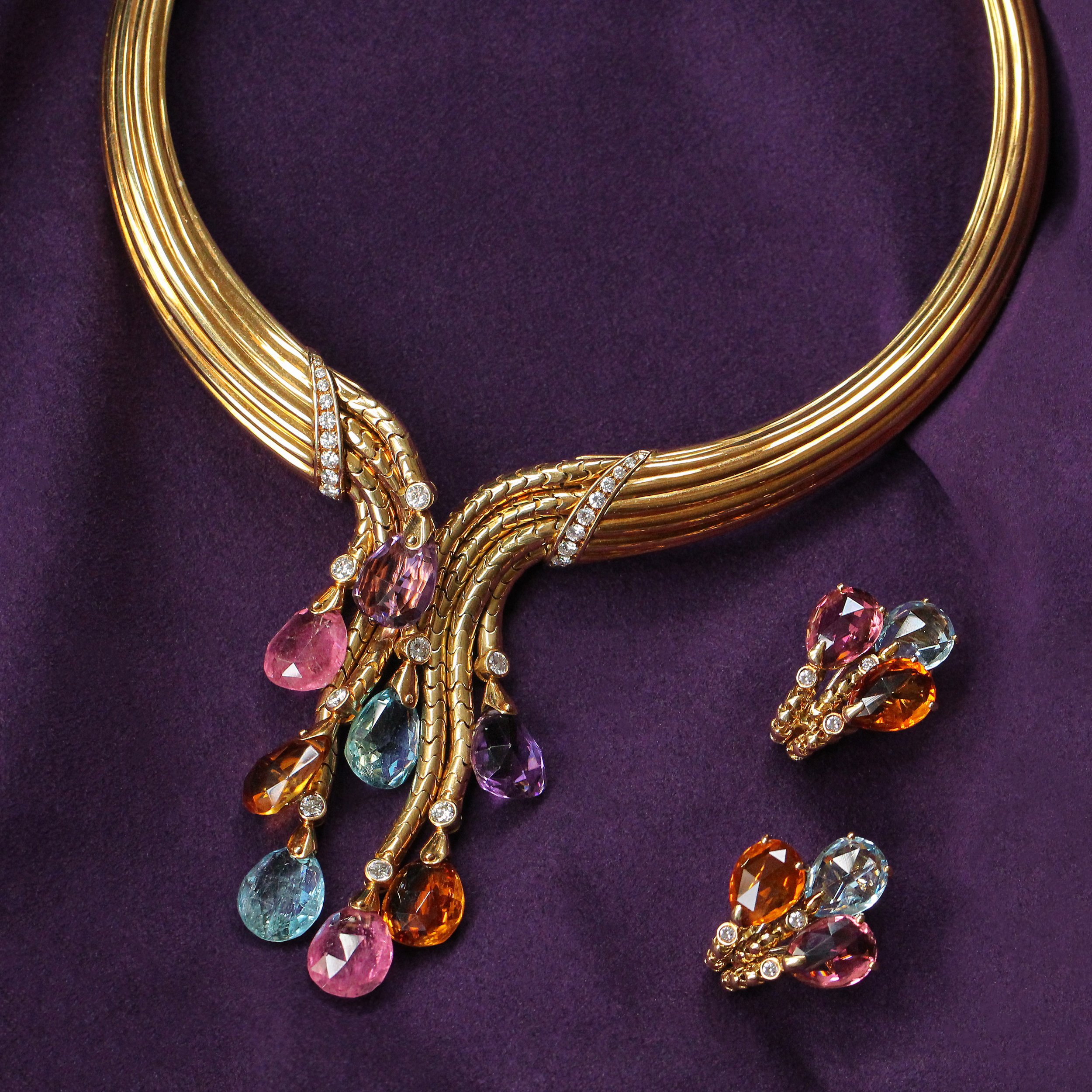Tourmaline
Tourmalines can be found in a kaleidoscope of colours, which makes them a popular choice in contemporary fine jewellery. Although many tourmaline deposits contain a black, iron rich variety called ‘Schorl’, others are found in a rich rainbow of pastel hues. Shades of violet, green, blue, and pink to red (rubellite) are common and affordable under 5 carats. Chrome Tourmalines are a prized form of their intense green colouring.

The main source for Tourmalines is Brazil. The rarest and most valued examples are found in the Brazilian state of Paraiba. Paraiba Tourmalines were first discovered in 1989 and have a striking neon blue colour and a bright brilliance. Elbaite crystals are bi-coloured Tourmalines, and are used to striking effects in jewellery. Watermelon Tourmalines are an example of bi-coloured tourmalines. They mimic their namesake fruit, with their pink centres and green to black edges. Such tourmalines are cut and set in slices to best show off their colour zone graduations.
Tourmalines typically have many eye-visible inclusions, so stones with a high clarity are prized. Green Tourmalines have a particularly strong pleochroism. Some tourmalines, when polished into cabochons, contain a chatoyancy or ‘cat’s eye’ effect from the close arrangement of tube-like inclusions. Tourmalines have a vitreous luster and although they are rated 7.5 on the Mohs hardness scale, they are brittle.
Tourmalines have been historically confused with other coloured gemstones. It was not until the 1800s that tourmalines were recognised and retailed as a gemstone of value. Renowned mineralogist, George F. Kunz championed the colourful gems as American after Tourmalines were founded in Maine and California in 1882. However, at the time the strongest market for pink and red Tourmalines mined in San Diego were exported to China. This vogue and trade link was supported by the Chinese Dowager Empress Tz’u Hsi’s love of pink tones. In 1912 the American Tourmaline trade collapsed along with the Chinese government. Today San Diego County is still mining Tourmaline and has been a consistent addition of colour to many jewels produced by the American jewellery powerhouse, Tiffany and Co.

